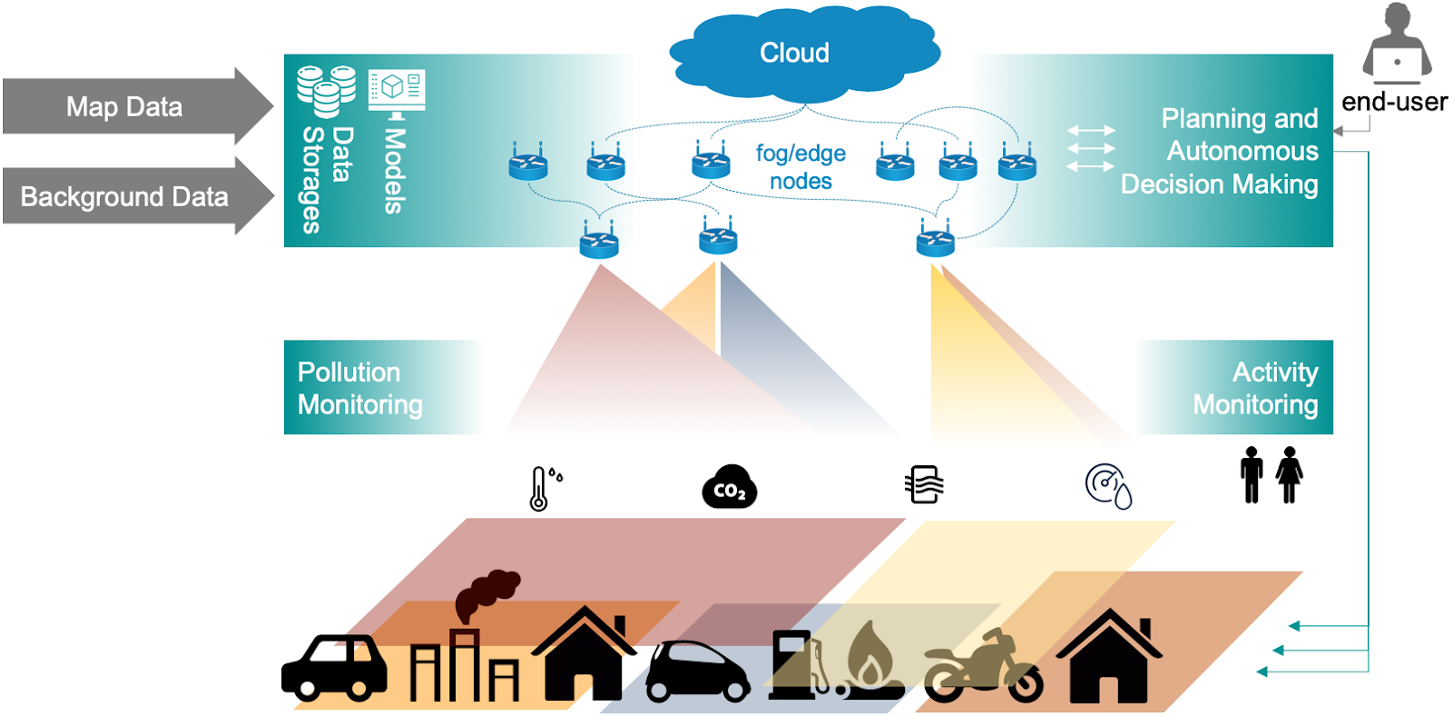About the project
Existing air quality (AQ) monitoring and management methods and evolving modelling practices across Norwegian and European cities have achieved significant improvements of AQ but further progress is needed due to some quality-driven requirements, such as low-latency AQ prediction. This can only be achieved by intelligent data processing at multiple levels of granularity. To this end, affordable, effective and intelligent tools are needed that utilize the current advances in digitisation of all spheres of society, providing radical innovation of air quality management. The AirQMan project promises autonomous computational methods and techniques that can be used to develop such solutions, and has the potential for opening up a new era in air quality management. Our strong belief is that such a system can be realized across the Edge-Fog-Cloud continuum, extending data processing and computational intelligence from the Cloud to multiple levels of Fog nodes towards the edge of the network.
Objectives
The primary objective of AirQMan is to develop intelligent computing methods, tools and techniques for the autonomous management of low-latency data fusion and analysis in Air Quality Management Systems.
Outcomes
The project will develop AirQDM – a novel data processing design model that will autonomously determine the optimal data fusion processing flow, the right data sources, and the right trained deep learning (DL) method for maximizing the accuracy of a prediction in response to an AQ request. A second innovation of the project, AirQWare will determine (predict) the optimal distributed deployment for an efficient computation of the DL model while satifying requirements of accuracy and latency, and adapt the deployment of the DL model during runtime as necessary to maintain accuracy and latency requirements.
The outcomes of AirQMan has the potential of opening up a new era of AQ management as an enabler for disruptive AQ services. The AirQMan toolkits will be used to build advanced AQMS units providing high spatio-temporal AQ information to the public and relevant agencies for decision making with a high degree of autonomy, on low-latency AQ mitigations.
Project period
The project period is from July 2021 until June 2025.
Financing
The project is funded by the Research Council of Norway (RCN) under the IKTPLUSS programme.
Cooperation
Research partners in AirQMan are the Networks and Distributed Systems (ND) group, at the Department of informatics, University of Oslo, and Norwegian Institute for Air Research (NILU).
Non-research partners are the City of Oslo, Bymiljøetaten, and Halden Municipality, Smart City Halden.
